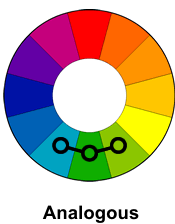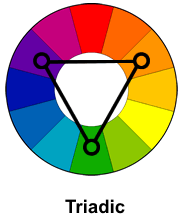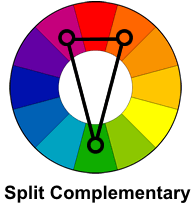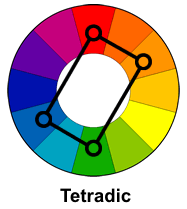Colour Theory
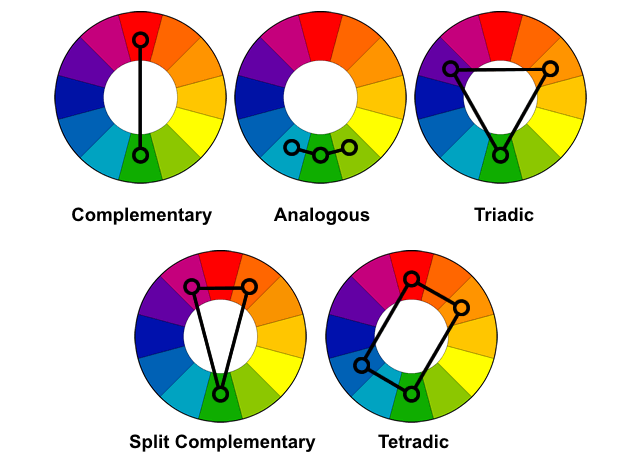
Using the colour wheel it is possible to easily identify colour schemes that work well together. The image shows several of the methods you can use. This site lets you set a base colour, then choose your theory to develop a scheme. You can also have a monochromatic scheme (such as black and white).
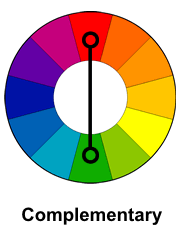
Complementary Colours are directly opposite each other on the colour wheel. There is a sharp contrast between the two colours - this helps imagery "pop". Be careful not to overuse the same colours though, it can overwhelm people and become completely ineffective. Click here for some examples of Complementary Colours
Analogous Colours are next to one another on the colour wheel. The best way to use an analogous colour scheme is to have one main colour, with one suppporting, then use the third to accent. What this means is maybe a background box at the top of the page in the darker green, information boxes in the blue, and then a call to action ("buy it now") in the light green. Click here for some examples of Analogous Colour schemes.
Triadic Colours are spaced evenly around the colour wheel. Using a triadic colours (usually) creates a bright and dynamic scheme that has a feeling of balance whilst still being contrasting. Click here for examples
Split Complementary Colours schemes use one base colour and two colours to supplement it. The two colours are usually one either side of the complementary colour . So take your base colour, find the colour directly opposite it (that's the complementary one) but instead of using this colour use the ones directly to the side of it. In the image the base colour is green. Find some examples here.
Tetradic colours are sometimes called rectangular colours, or in special cases, square colours. It is bascially using 4 colours, but they are not random but two complementary pairs. The best way to use a tetradic scheme is to let one colour dominate and support it with the other three colours. A square colour scheme has all 4 colours equally spaced around the colour wheel. This is the hardest scheme to do well, for examples do a search and look at the images - there isn't a page with lots of examples on.
